What is NFC Technology?
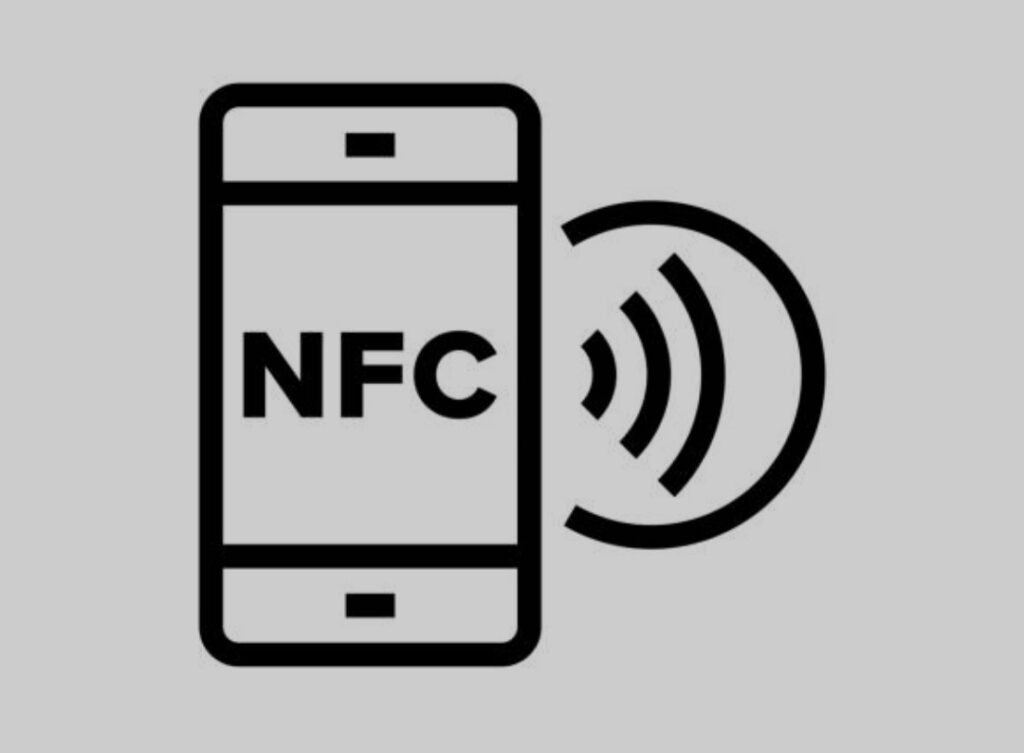
Definition and Overview
What is NFC technology?
Near Field Communication (NFC) is a short-range wireless communication technology that allows two electronic devices to exchange data when they are in close proximity—typically within 4 centimeters (1.5 inches) of each other.
It operates on the 13.56 MHz frequency and enables secure, contactless interactions without requiring an internet connection.
NFC technology is built upon Radio Frequency Identification (RFID) principles, but with advanced features that support bidirectional communication, making it ideal for various applications such as contactless payments, data sharing, and access control.
Unlike Bluetooth or Wi-Fi, NFC does not require manual pairing or complex setup procedures.
It initiates communication automatically when two NFC-enabled devices come into range.
This feature makes NFC particularly useful for fast and secure transactions, including contactless payments, smart home automation, and public transportation systems.
Many modern smartphones, smartwatches, payment cards, and access badges are equipped with NFC chips, allowing users to perform everyday tasks effortlessly.
For instance, Apple Pay, Google Pay, and Samsung Pay rely on NFC for tap-and-go payment solutions, making transactions seamless and secure.
Key Features of NFC Technology:
✔ Short-Range Communication – Works only when devices are in very close proximity, reducing security risks.
✔ High Security – Uses encryption protocols for safe data transmission.
✔ Passive and Active Devices – Can work with NFC tags that do not require power.
✔ Fast and Seamless – No need for manual pairing; simply bring two devices close together.
✔ Energy Efficient – Consumes very little power compared to Bluetooth or Wi-Fi.
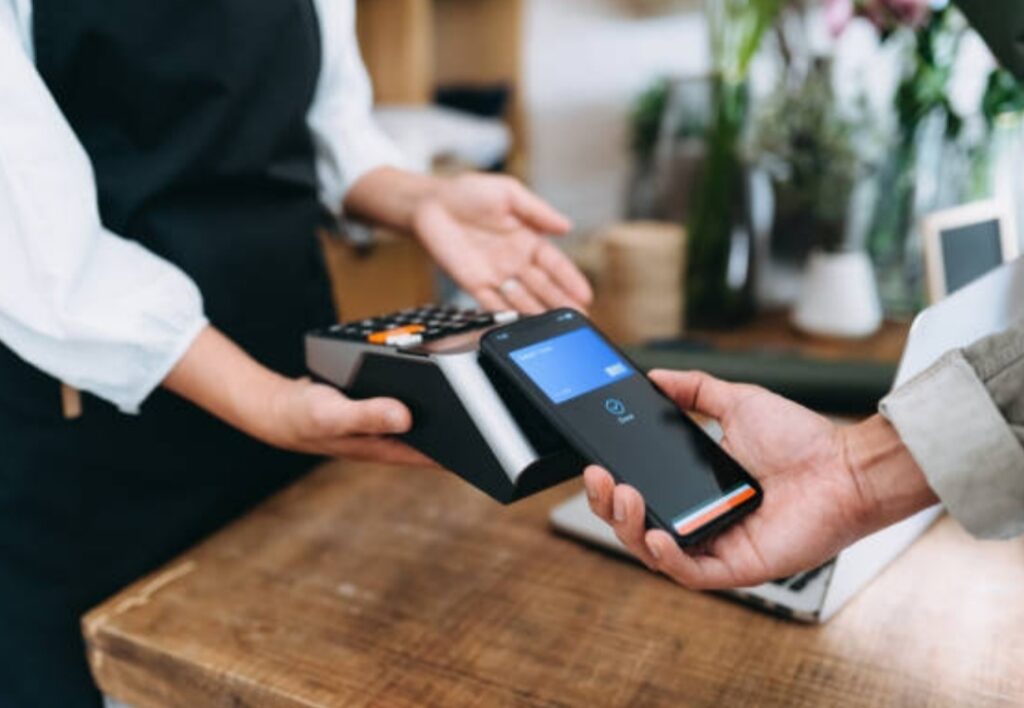
Brief History and Development
The origins of NFC technology trace back to the early 1980s, when Radio Frequency Identification (RFID) technology was first developed for tracking inventory and secure access control.
Sony and NXP Semiconductors played a crucial role in the development of NFC, building on RFID principles to create a more sophisticated system capable of two-way communication.
The significant milestones in NFC technology include:
✔ 2002 – Sony and NXP Semiconductors introduced NFC technology.
✔ 2004 – The NFC Forum was established by Sony, Nokia, and Philips to develop global NFC standards.
✔ 2006 – The first set of NFC specifications was released, defining how devices should communicate.
✔ 2010 – The first NFC-enabled smartphone, the Nokia C7, was launched.
✔ 2011 – Google introduced Google Wallet, one of the first NFC-based mobile payment systems.
✔ 2014 – Apple introduced Apple Pay, making NFC payments mainstream.
✔ 2020 and Beyond – NFC has expanded beyond payments into healthcare, transportation, IoT, and identity verification.
Today, NFC technology is an integral part of everyday life, from unlocking smart doors to seamless ticketing systems in public transport.
With ongoing advancements, NFC is expected to play an even greater role in smart cities, secure authentication, and digital identification solutions.
🚀 Ready to Upgrade Your Device? Discover the latest NFC-enabled gadgets for seamless digital experiences!
How Does NFC Work?

Operating Principles
Near Field Communication (NFC) works based on magnetic field induction, a key principle that enables wireless communication between two devices when they are placed close to each other.
Unlike Bluetooth or Wi-Fi, which use radio waves for long-distance communication, NFC operates at 13.56 MHz and relies on electromagnetic coupling to establish a connection.
How NFC Enables Wireless Data Transfer
When an active NFC device (such as a smartphone or payment terminal) is brought near a passive NFC tag or another active NFC device, the following process takes place:
1️⃣ Magnetic Field Generation: The active device creates an electromagnetic field using an NFC antenna.
2️⃣ Inductive Coupling: If a passive NFC tag is within range, it absorbs energy from the field and powers itself.
3️⃣ Data Exchange: Once powered, the passive NFC tag transmits data back to the active device using load modulation.
4️⃣ Communication Initiation: For two active NFC devices, both generate their own fields and exchange data using a half-duplex method (one device transmits while the other listens).
Since NFC works at very short distances (typically less than 4 cm), it is more secure than other wireless technologies.
This makes it an ideal choice for contactless payments, secure authentication, and data sharing.
Communication Modes
NFC technology supports three primary modes of communication, each designed for specific use cases. These include Card Emulation Mode, Reader/Writer Mode, and Peer-to-Peer Mode.
Each mode allows devices to interact in different ways, making NFC a versatile and practical technology in various industries.
Card Emulation Mode
In Card Emulation Mode, an NFC-enabled smartphone or device acts like a contactless smart card, allowing it to interact with payment terminals, access control systems, and public transportation gates.
This mode is widely used for:
✔ Contactless Payments – Services like Apple Pay, Google Pay, and Samsung Pay use NFC card emulation to make secure transactions.
✔ Access Control – NFC-enabled ID cards or smartphones can unlock office doors, hotel rooms, and secure areas.
✔ Transit Systems – Many metro and bus systems allow travelers to use NFC-enabled devices as digital tickets.
How It Works
1️⃣ When a user places their smartphone near an NFC terminal, the device imitates a physical card.
2️⃣ The terminal reads the secure payment or authentication data stored in the device’s secure element (SE) or cloud-based Host Card Emulation (HCE).
3️⃣ The transaction or access request is processed within milliseconds, ensuring a fast and seamless experience.
📌 Security Measures in Card Emulation Mode:
✔ Tokenization – Encrypts payment data, replacing sensitive card details with a unique digital token.
✔ Biometric Authentication – Many NFC payment systems require fingerprint or facial recognition for added security.
✔ Limited Range Protection – Since NFC works only at very close distances, it reduces the risk of hacking or unauthorized access.
🚀 Discover Secure NFC Payment Solutions – Learn how to set up NFC payments on your device!
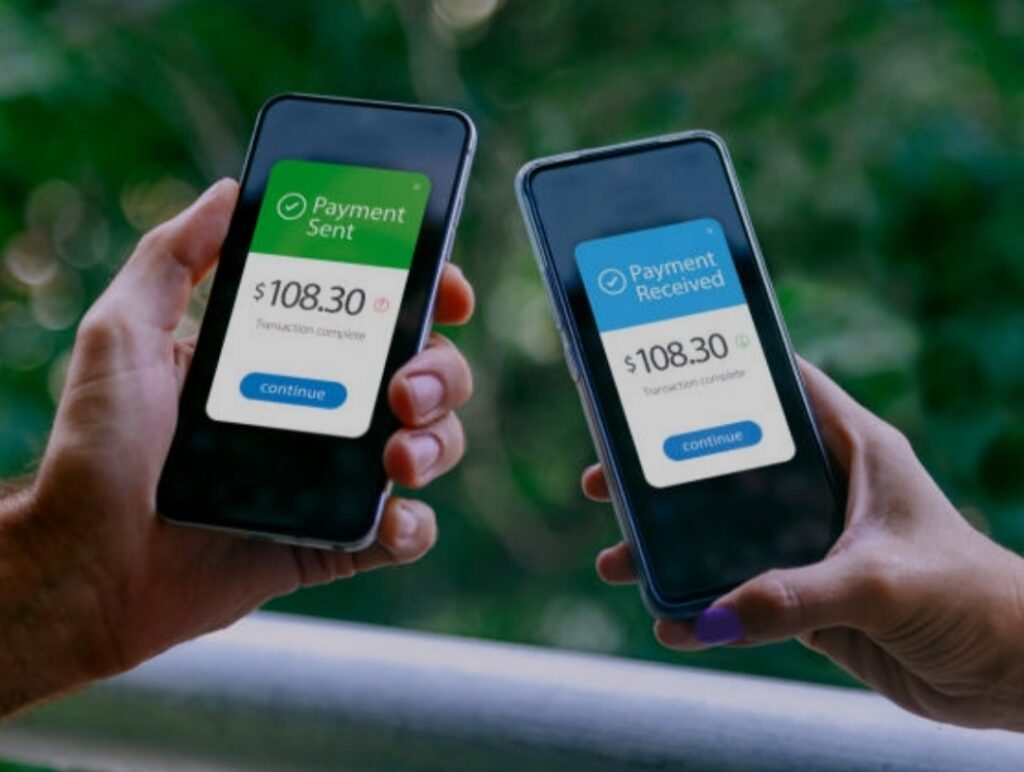
Reader/Writer Mode
In Reader/Writer Mode, an NFC-enabled device acts as a reader that can scan and interact with passive NFC tags.
This mode is commonly used for:
✔ Smart Posters & Advertisements – Users can tap their phone on an NFC tag embedded in a poster to open a website, watch a video, or access exclusive offers.
✔ Product Authentication – Brands use NFC tags on packaging to verify the authenticity of products, reducing counterfeit risks.
✔ Museum & Tourism Guides – Visitors can tap NFC-enabled plaques to receive instant information about exhibits or landmarks.
✔ IoT Device Setup – NFC tags can be programmed to connect smart home devices to Wi-Fi or Bluetooth with a single tap.
How It Works
1️⃣ The NFC-enabled smartphone detects and powers the NFC tag using inductive coupling.
2️⃣ The stored data (URL, text, or commands) is transmitted to the smartphone.
3️⃣ The user’s device executes the command (e.g., opening a website, saving a contact, or launching an app).
📌 Advantages of Reader/Writer Mode:
✔ No Internet Required – NFC tags work offline, making them useful for instant data retrieval.
✔ Energy Efficient – NFC tags do not need a battery, as they draw power from the reader device.
✔ Customizable & Versatile – Businesses can program NFC tags to trigger specific actions when scanned.
🚀 Set Up NFC Tags for Your Business – Unlock the potential of NFC marketing!
Peer-to-Peer Mode
In Peer-to-Peer Mode, two NFC-enabled devices can exchange data wirelessly without requiring an internet connection or pairing process.
This mode is commonly used for:
✔ File Sharing – Users can transfer contacts, photos, and documents by simply tapping two devices together.
✔ Business Networking – Digital business cards can be shared instantly via NFC.
✔ Quick Settings Activation – Users can tap an NFC tag to toggle Wi-Fi, Bluetooth, or Airplane Mode.
How It Works
1️⃣ Both devices generate a small magnetic field and establish a two-way connection.
2️⃣ The devices exchange data in half-duplex mode, meaning one device transmits while the other receives.
3️⃣ Once the transfer is complete, the devices disconnect automatically.
📌 Benefits of Peer-to-Peer Mode:
✔ Faster than Bluetooth – NFC does not require pairing or manual setup, making data exchange nearly instant.
✔ Highly Secure – Since NFC operates at very close distances, unauthorized access is extremely difficult.
✔ No Internet Required – Peer-to-peer transfers work offline, making it useful in airports, remote areas, or events.
🚀 Start Sharing Files Instantly with NFC – Learn how to use NFC for fast data transfer!
NFC technology is revolutionizing contactless payments, smart access control, interactive marketing, and data sharing.
By understanding how NFC works and its different communication modes, businesses and consumers can unlock the full potential of this powerful technology.
Want to integrate NFC into your daily life or business? ✅ Explore NFC-enabled devices and discover innovative applications today!
Applications of NFC Technology
Near Field Communication (NFC) is transforming the way people interact with technology in their daily lives.
From contactless payments to smart home automation, NFC technology is being widely adopted across various industries.
Let’s explore some of the most common and innovative applications of NFC technology and how they are making everyday tasks more convenient.

Contactless Payments
One of the most well-known applications of NFC technology is in mobile payments, where smartphones and smartwatches can be used to make purchases with a simple tap.
How NFC Contactless Payments Work
1️⃣ The user links a debit or credit card to an NFC-enabled payment app, such as Apple Pay, Google Pay, or Samsung Pay.
2️⃣ At checkout, the user holds their device near the payment terminal, which uses NFC to initiate a secure wireless connection.
3️⃣ The transaction is authenticated using biometric security (fingerprint or face recognition) or a passcode.
4️⃣ Payment data is transmitted using tokenization, replacing card details with a unique digital token for enhanced security.
Benefits of NFC Payments
✔ Speed and Convenience – No need to carry cash or cards. Just tap and pay instantly.
✔ Enhanced Security – Encrypted transactions and biometric authentication prevent fraud.
✔ Global Adoption – Many retailers, restaurants, and public transport systems worldwide accept NFC payments.
✔ Offline Functionality – Some NFC payment apps allow transactions even when the device is offline.
🚀 Get Started with Contactless Payments – Learn how to set up Apple Pay or Google Pay today!
Public Transportation
NFC has revolutionized public transportation systems, making commuting faster, easier, and more efficient.
Instead of using traditional paper tickets or plastic transit cards, commuters can use NFC-enabled smartphones or wearables to tap and ride.
How NFC Works in Public Transportation
✔ Transit Pass Integration – Many cities allow users to add transit cards to their smartphones via apps like Google Wallet or Apple Wallet.
✔ Automatic Fare Deduction – NFC-enabled transit gates instantly deduct fares when passengers tap their device or transit card.
✔ Seamless Transfers – NFC allows quick transfers between different modes of transport, such as buses, subways, and trains.
✔ Real-Time Travel Updates – Some NFC systems sync with travel apps to provide real-time train or bus schedules.
Examples of NFC in Public Transport
🚆 London’s Oyster Card – Users can tap their NFC-enabled phone to access the underground and buses.
🚌 New York’s OMNY System – MTA supports NFC payments through Apple Pay and Google Pay.
🚊 Japan’s Suica and Pasmo Cards – Popular NFC transit cards used across trains and buses in Japan.
📌 Why NFC is the Future of Public Transport:
✔ Eliminates the need for physical tickets or cash payments.
✔ Reduces wait times and congestion at entry points.
✔ Provides better security and prevents ticket fraud.
🚀 Upgrade Your Commute with NFC Transit Passes – Find out how to add a digital transit card to your phone!
Access Control
NFC technology is widely used in access control systems, replacing traditional keys and security badges with smart access solutions.
Many businesses, hotels, and residential buildings now rely on NFC for secure, contactless entry.
How NFC Enhances Access Control
✔ Keyless Entry for Homes & Offices – NFC-enabled smart locks allow users to unlock doors with their smartphone or an NFC keycard.
✔ Hotel Room Access – Many hotels issue digital keycards via NFC, letting guests unlock doors with their phone.
✔ Employee ID Badges – NFC-enabled ID cards provide restricted access to secure areas within workplaces.
✔ Event Ticketing & Venue Entry – Concerts, sports events, and conferences use NFC for fast and secure ticket scanning.
Advantages of NFC-Based Access Control
✔ High Security – NFC access cards and digital keys are encrypted to prevent unauthorized duplication.
✔ Convenience – No need to carry physical keys or badges—just tap your phone or card.
✔ Integration with Smart Systems – NFC can sync with security cameras, alarms, and time-tracking software for enhanced monitoring.
🚀 Upgrade to NFC Smart Locks – Discover the best NFC-enabled locks for your home or office!
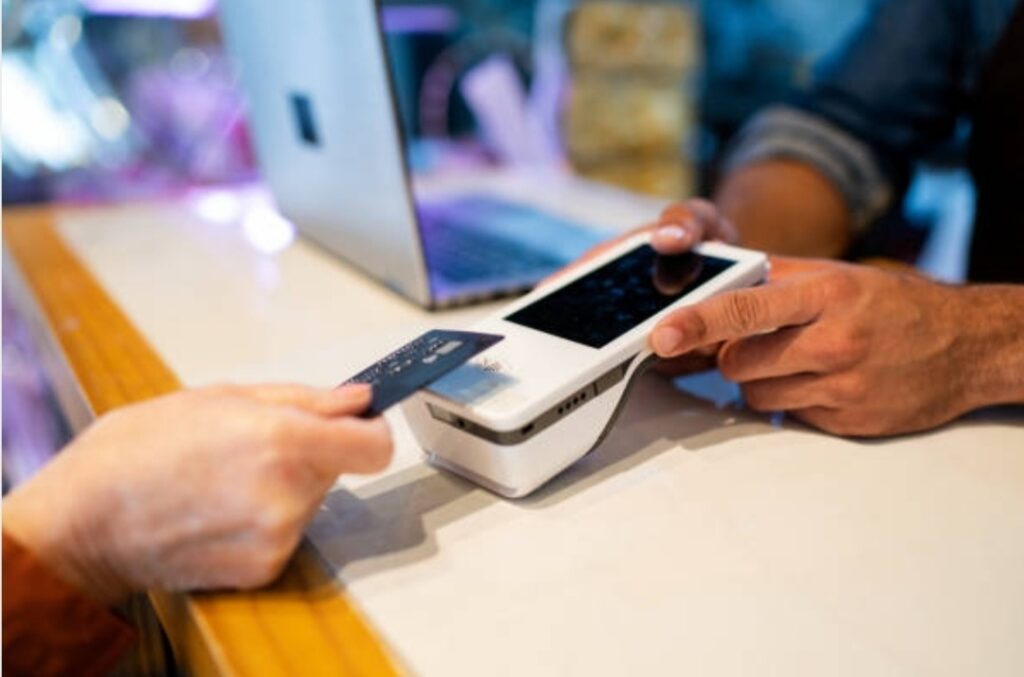
Data Transfer and Sharing
NFC makes data transfer between devices seamless and instant, eliminating the need for manual pairing or internet connectivity.
This feature is especially useful for sharing contacts, files, and multimedia content.
How NFC Data Sharing Works
1️⃣ Two NFC-enabled devices are placed within close proximity (under 4 cm).
2️⃣ The user selects the file, contact, or link to share.
3️⃣ With a simple tap, the data is transferred instantly via peer-to-peer NFC communication.
Common Uses of NFC for Data Sharing
✔ Business Cards – Exchange digital business cards with a single tap.
✔ File Transfers – Quickly share photos, videos, or documents without using email or cloud storage.
✔ App & Web Links – Share links to apps, websites, or digital content by tapping another device.
✔ Pairing with Bluetooth Devices – NFC simplifies Bluetooth pairing by initiating connections with just a tap.
📌 Why NFC is Better Than Bluetooth for Quick Data Sharing:
✔ Faster Setup – No need for pairing codes or searching for devices.
✔ Lower Power Consumption – NFC uses less energy than Bluetooth.
✔ More Secure – Works only at close range, reducing unauthorized access risks.
🚀 Start Sharing Files Instantly with NFC – Learn how to enable NFC file transfers on your device!
Smart Home Devices
NFC is playing a significant role in the rise of smart home automation, making it easier for users to control and manage smart devices.
How NFC Simplifies Smart Home Automation
✔ One-Tap Device Pairing – NFC enables quick and hassle-free connections between smart home devices.
✔ Automated Routines – Users can trigger smart home actions (e.g., turning on lights or adjusting the thermostat) by tapping an NFC tag.
✔ Voice Assistant Integration – NFC can work with Amazon Alexa, Google Assistant, and Apple HomeKit to control smart home gadgets.
✔ Customized Smart Home Controls – Program NFC tags to enable specific settings, such as activating “Do Not Disturb” mode at night.
Examples of NFC in Smart Homes
🏠 Smart Lights – Tap an NFC tag to switch on/off or change color settings.
🔊 Smart Speakers – Instantly connect to Bluetooth speakers or stream music.
🌡 Smart Thermostats – Adjust room temperature with an NFC tap.
📺 Smart TVs – Tap your phone on the TV to mirror content instantly.
📌 Why NFC is a Game-Changer for Smart Homes:
✔ Reduces manual setup time for smart devices.
✔ Enhances home security with smart locks and automated routines.
✔ Makes daily tasks easier with one-tap automation.
🚀 Upgrade Your Home with NFC Smart Tech – Explore the best NFC-enabled smart home gadgets!
From fast payments and secure access control to smart home automation and public transportation, NFC technology is shaping the future of connectivity.
Its ease of use, security, and versatility make it an essential technology for both consumers and businesses.
🔹 Want to experience the benefits of NFC in your daily life? Start using NFC-enabled devices today and unlock a world of convenience!
Advantages of NFC Technology
Near Field Communication (NFC technology) has gained widespread popularity due to its convenience, security, and versatility.
From mobile payments and data sharing to smart home automation and access control, NFC offers numerous benefits that make everyday tasks more efficient.
Let’s dive deep into the key advantages of NFC technology and how it enhances our digital experiences.
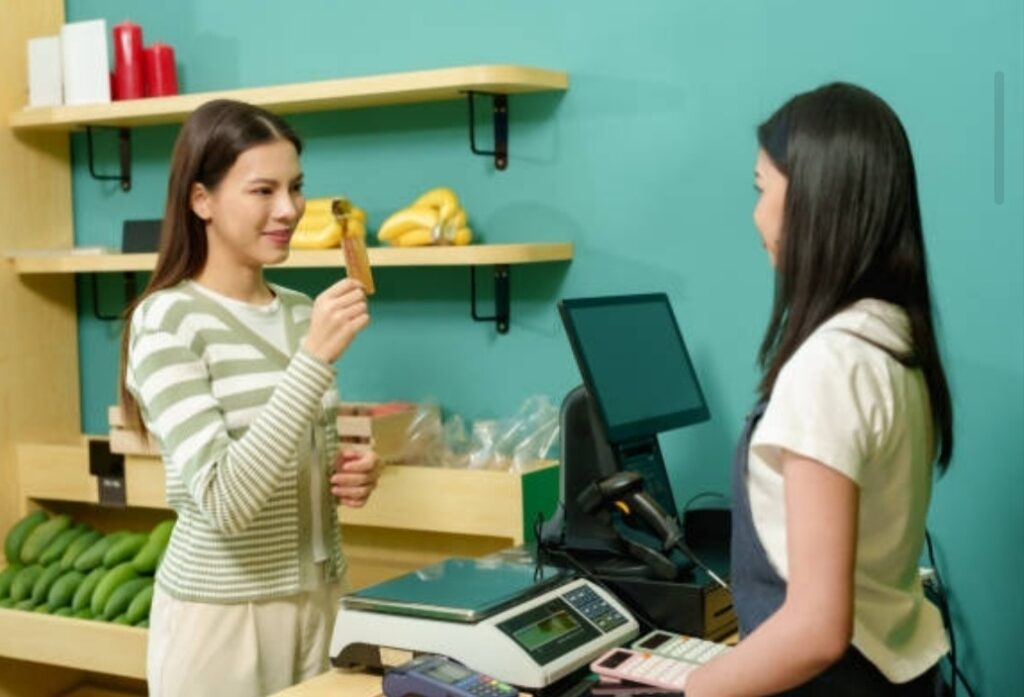
Ease of Use – Simplifying Everyday Interactions
One of the biggest advantages of NFC technology is its simplicity.
Unlike traditional wireless communication methods that require manual setup, NFC works with a simple tap or close proximity interaction.
How NFC Makes Daily Interactions Effortless
✔ No Pairing Needed – Unlike Bluetooth, NFC does not require complex pairing or device discovery.
✔ Instant Connection – Simply bring two NFC-enabled devices within 4 cm, and the connection is established.
✔ User-Friendly – Works effortlessly with smartphones, smart cards, and wearables.
✔ No External Power Source Required – NFC tags function without batteries, making them ideal for automation.
Examples of NFC’s Ease of Use in Action
📱 Mobile Payments – Tap your phone on a POS terminal to complete a secure transaction within seconds.
🚪 Keyless Entry – Unlock doors with an NFC tag or smartphone, eliminating the need for keys.
📤 Quick File Sharing – Transfer photos, videos, or business cards between devices with a single tap.
🎫 Event Ticketing – Scan an NFC-based ticket at a concert or stadium for seamless entry.
📌 Why NFC is More Convenient Than Other Wireless Technologies:
✔ Faster than QR codes, which require scanning and app activation.
✔ Easier than Bluetooth, which needs manual pairing and consumes more power.
✔ More reliable than Wi-Fi, which depends on network availability.
🚀 Upgrade to NFC Devices Today – Explore the best NFC-enabled gadgets for faster transactions and connectivity!
Security Features – Enhancing Protection for Users
In a world where digital security is a top priority, NFC technology provides strong protection against fraud and data breaches.
How NFC Ensures Secure Transactions
✔ Short-Range Communication – NFC only works at close range (under 4 cm), reducing the risk of unauthorized interception.
✔ Encrypted Data Transfer – Transactions and data exchanges are encrypted, making them highly secure.
✔ Tokenization in Payments – Credit card details are never shared directly; instead, a unique token is generated for each transaction.
✔ Biometric Authentication – NFC payment apps like Apple Pay and Google Pay require fingerprint or face recognition to approve transactions.
Why NFC is Safer Than Other Wireless Technologies
✔ Bluetooth Risks: Bluetooth connections can be hacked from a distance, while NFC requires close contact.
✔ Wi-Fi Vulnerabilities: Public Wi-Fi networks are prone to cyberattacks, but NFC works in offline mode.
✔ QR Code Fraud: Malicious QR codes can redirect users to phishing sites, while NFC data is pre-programmed and cannot be altered remotely.
Examples of NFC Security in Action
💳 Contactless Card Payments – NFC-enabled credit/debit cards use EMV chip technology to prevent cloning.
🏨 Hotel Room Access – Guests receive unique digital keys on their smartphones, ensuring secure access.
🔐 Smart Locks – Homeowners can use NFC-enabled locks for secure, keyless entry.
🚆 Transit Systems – NFC-based metro cards prevent ticket duplication and fraud.
📌 How NFC Helps Prevent Fraud:
✔ Works only within short distances, reducing hacking risks.
✔ Data is encrypted, making transactions highly secure.
✔ Supports two-factor authentication for additional protection.
🚀 Get a Secure NFC Payment Card – Discover top NFC-enabled banking solutions for secure transactions!
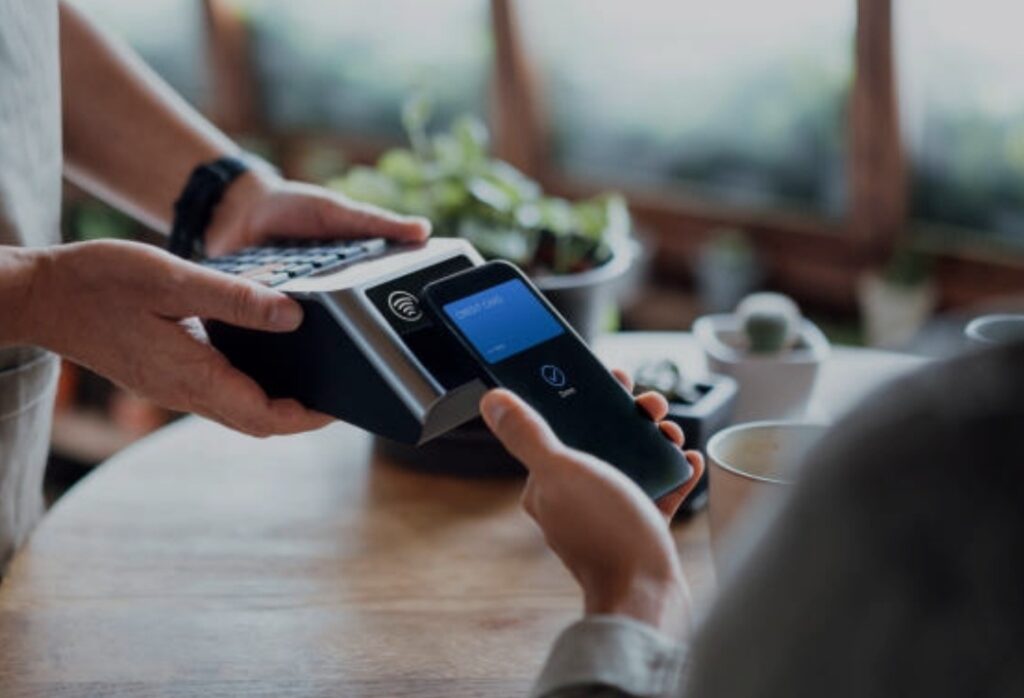
Versatility – Multiple Applications Across Industries
One of the biggest strengths of NFC technology is its wide range of applications.
From payments and public transport to smart home automation and healthcare, NFC is being adopted in countless industries.
Where NFC Technology is Used
✔ Retail & Payments – Contactless transactions via Apple Pay, Google Pay, and Samsung Pay.
✔ Public Transport – Tap-to-ride systems in metros, buses, and trains worldwide.
✔ Access Control – Secure entry into offices, hotels, and residential buildings.
✔ Healthcare – NFC wristbands store patient medical records for instant access.
✔ Automotive – Cars use NFC for keyless entry and smart infotainment controls.
✔ Smart Homes – NFC tags automate lights, appliances, and security systems.
Why NFC is More Versatile Than Other Technologies
✔ No Internet Required – Works offline, unlike Wi-Fi-based services.
✔ Compatible with a Wide Range of Devices – Supports smartphones, wearables, keycards, and even posters.
✔ Used for Both Personal and Business Applications – Works in payments, marketing, automation, security, and healthcare.
Real-World Examples of NFC’s Versatility
💳 Retail Checkout – Customers tap their phones to pay, reducing checkout times.
🎟 Event Check-In – Conference attendees scan NFC badges for faster registration.
🛏 Hotel Check-In – Guests receive digital room keys via NFC, eliminating front desk wait times.
🔄 Device Pairing – Wireless headphones and speakers instantly connect via NFC.
📌 Why NFC is the Future of Digital Interaction:
✔ Works across multiple industries, from banking to healthcare.
✔ Supports offline functionality, making it more reliable than Wi-Fi.
✔ Compatible with smart devices, wearables, and embedded systems.
🚀 Explore NFC-Enabled Smart Devices – Discover the best NFC gadgets to simplify your life!
Why NFC is the Future of Contactless Technology
As digital transformation accelerates, NFC technology continues to play a vital role in enhancing convenience, security, and efficiency.
Its ease of use, robust security, and versatility make it an ideal choice for businesses and consumers alike.
🔹 Want to experience the benefits of NFC firsthand? Start using NFC-enabled devices today and embrace a smarter, more connected world!
Limitations and Challenges of NFC Technology
While Near Field Communication (NFC) technology offers convenience, security, and versatility, it is not without its limitations.
Despite its widespread adoption in contactless payments, smart access systems, and IoT applications, certain challenges may affect its functionality and broader implementation.
Here are some of the key limitations and challenges of NFC technology that businesses and users should consider.

Range Constraints – The Need for Close Proximity
One of the biggest drawbacks of NFC technology is its limited range.
Unlike Bluetooth or Wi-Fi, which can work over long distances, NFC requires devices to be within 4 cm (1.5 inches) of each other to establish a connection.
How NFC’s Short Range Affects Its Usability
✔ Limited Use in Large-Scale Environments – Unlike RFID, which can be scanned from several meters away, NFC tags must be physically tapped or placed extremely close to a reader.
✔ Inconvenience in Some Situations – Users must bring their devices very close to an NFC reader, which may not always be practical.
✔ Not Suitable for Long-Distance Communication – Unlike Bluetooth, which supports wireless data exchange over several meters, NFC only works within a few centimeters.
Examples of NFC’s Range Limitations in Action
📱 Mobile Payments: While NFC payments are fast and secure, users must physically tap their phone on the POS terminal, unlike QR code payments, which can work from a distance.
🚪 Access Control: NFC keycards must be placed directly against the reader, making it less convenient compared to RFID-based solutions.
📤 Data Sharing: Users must align two devices perfectly for a successful transfer, unlike Bluetooth, which can send files across a room.
📌 How to Overcome NFC’s Range Constraints:
✔ Use QR Code Hybrid Solutions – Many businesses integrate NFC and QR codes to offer multiple contactless options.
✔ Adopt Ultra-Wideband (UWB) Technology – Some newer smartphones use UWB for more extended-range communication while maintaining NFC’s security.
✔ Implement Smart Placement of NFC Tags – In public spaces, placing NFC tags at convenient locations can improve user experience.
🚀 Discover the Best NFC Devices – Upgrade your NFC-enabled gadgets for seamless and secure transactions!
Compatibility Issues – Not All Devices Support NFC
While NFC adoption is growing, not all devices are equipped with NFC capabilities.
This incompatibility limits its usability, especially in regions where older smartphones and payment terminals are still in use.
Why NFC Compatibility Is a Challenge
✔ Not All Smartphones Have NFC Chips – Many budget-friendly Android phones lack NFC functionality, making it impossible to use contactless payments.
✔ Limited Adoption in Some Countries – While Apple Pay and Google Pay are popular in North America and Europe, NFC adoption in developing markets is slower due to lack of infrastructure.
✔ Inconsistent Support Across Devices – Even when devices have NFC, some manufacturers place restrictions on how it can be used.
Real-World Examples of NFC Compatibility Issues
📱 Smartphones: Apple restricts third-party NFC access, allowing it only for Apple Pay and specific use cases.
🏧 Banking Terminals: Some older POS machines do not support NFC, requiring users to rely on chip-and-PIN transactions instead.
🚆 Public Transport Systems: While cities like London, Tokyo, and New York have integrated NFC into public transport, many regions still rely on older RFID-based cards.
📌 How to Overcome NFC Compatibility Issues:
✔ Choose NFC-Compatible Devices – If you rely on NFC, ensure your smartphone, smartwatch, or tablet supports it.
✔ Encourage Businesses to Upgrade – Retailers and transit systems should modernize their payment terminals to support NFC payments.
✔ Use Alternative Contactless Solutions – QR codes and Bluetooth can serve as backup options when NFC isn’t available.
🚀 Get an NFC-Enabled Smartphone – Explore the best mobile devices that support NFC payments and data sharing!

Security Concerns – Potential Vulnerabilities in NFC Transactions
Although NFC technology is generally secure, it is not completely immune to security risks.
If devices are not properly secured, hackers and cybercriminals may attempt to exploit vulnerabilities in NFC-based transactions.
Potential NFC Security Risks
✔ Eavesdropping: Since NFC relies on wireless communication, an attacker with specialized equipment could attempt to intercept signals.
✔ Data Manipulation: If an NFC transaction is not properly encrypted, there is a risk of data tampering.
✔ Relay Attacks: Hackers could use malicious NFC readers to relay and misuse authentication signals, potentially allowing unauthorized payments.
✔ Lost or Stolen Devices: If a smartphone with NFC payment capabilities is stolen and not locked with biometric security, unauthorized transactions could occur.
Real-World NFC Security Threats
💳 Contactless Payment Fraud: Cybercriminals have attempted to use fraudulent NFC readers to skim payment details.
🚪 Unauthorized Access: If NFC-based keycards are cloned, attackers may gain unauthorized access to secure locations.
📱 Malicious NFC Tags: Some hackers embed malware into NFC tags, tricking users into opening malicious websites.
📌 How to Secure NFC Transactions:
✔ Enable Biometric Authentication – Use fingerprint or facial recognition for NFC payments.
✔ Use Secure Payment Apps – Apple Pay, Google Pay, and Samsung Pay use tokenization, which prevents actual card details from being exposed.
✔ Turn Off NFC When Not in Use – Disabling NFC when not making payments reduces the risk of unauthorized scans.
✔ Use RFID/NFC-Blocking Wallets – Protect NFC-enabled credit cards with shielded wallets to prevent unauthorized reading.
🚀 Protect Your NFC Transactions – Learn how to safeguard your contactless payments and avoid fraud!
Understanding NFC’s Limitations and Security Measures
While NFC technology provides fast, contactless transactions, users must be aware of its limitations and security risks.
✔ Short-range constraints mean it may not be ideal for long-distance communication.
✔ Compatibility issues limit adoption in certain regions and devices.
✔ Security risks exist but can be mitigated with proper safety measures.
🔹 Want to maximize the benefits of NFC while staying secure? Make sure to use NFC with trusted devices, secure payment apps, and encryption-enabled connections!
Future Trends in NFC Technology
As technology advances, NFC (Near Field Communication) is poised to play an even greater role in our daily lives.
From seamless IoT integration to enhanced mobile payments and innovative business solutions, the future of NFC technology looks incredibly promising.
Let’s explore the top emerging trends shaping the next generation of NFC applications.

Expansion in IoT – The Role of NFC in the Internet of Things
The Internet of Things (IoT) is rapidly transforming how smart devices interact with each other.
NFC technology is emerging as a key enabler of IoT connectivity, offering secure, low-power, and user-friendly communication between devices.
How NFC is Enhancing IoT Connectivity
✔ Seamless Device Pairing – NFC makes it easier than ever to connect smart devices without complex setup processes.
✔ Low-Power Consumption – Unlike Wi-Fi and Bluetooth, NFC requires minimal energy, making it ideal for battery-powered IoT devices.
✔ Secure Data Transmission – NFC’s short-range nature helps prevent unauthorized interception, ensuring safer IoT interactions.
Real-World Applications of NFC in IoT
🏠 Smart Homes – NFC can be used to automate home settings, such as unlocking smart locks, adjusting thermostats, or controlling smart lighting.
🚗 Connected Vehicles – Car manufacturers are integrating NFC for keyless entry, infotainment system control, and secure in-car payments.
🏢 Smart Offices – NFC-enabled employee badges provide secure access control and can even automate workspace settings.
🏥 Healthcare & Wearables – Medical devices with NFC can transmit patient data securely to doctors and hospitals.
📌 How NFC Will Revolutionize IoT in the Future:
✔ More NFC-enabled smart home devices will allow frictionless automation.
✔ Improved security standards will ensure safe NFC-based IoT interactions.
✔ Integration with AI and cloud computing will make NFC-driven IoT devices smarter and more responsive.
🚀 Discover the Best NFC IoT Gadgets – Upgrade your home, office, or car with NFC-powered smart devices!
Enhanced Payment Solutions – The Future of Contactless Transactions
The rise of contactless payments has been accelerated by NFC technology, and its future looks even brighter.
With more businesses adopting NFC payments, we can expect faster, safer, and more versatile transaction methods.
Advancements in NFC-Based Mobile Payments
✔ Frictionless Transactions – Tap-to-pay has become the standard for fast and convenient checkouts.
✔ Increased Security Measures – NFC payments use tokenization, which prevents credit card data theft.
✔ Biometric Authentication – Fingerprint and facial recognition add an extra layer of security for mobile payments.
Emerging Trends in NFC Payment Solutions
💳 Wearable Payments – Smartwatches and fitness bands with NFC chips allow users to make purchases without carrying a phone or card.
🌎 Global Adoption of NFC Payments – More countries are integrating NFC-based digital wallets into their financial systems.
🏦 Crypto & NFC Payments – Some platforms are exploring NFC-based cryptocurrency transactions, bringing blockchain security to tap-to-pay methods.
Why NFC is the Future of Payments
✔ Speed & Convenience – Faster checkouts and eliminating the need for physical cards.
✔ Better Fraud Protection – Encrypted NFC transactions reduce the risk of payment fraud.
✔ Versatile Use Cases – NFC payments are expanding into public transport, vending machines, and peer-to-peer transactions.
📌 How to Stay Ahead in NFC Payments:
✔ Adopt NFC-enabled payment methods like Apple Pay, Google Pay, and Samsung Pay.
✔ Upgrade to NFC-enabled credit/debit cards for a faster checkout experience.
✔ Ensure merchants accept NFC payments before making a purchase.
🚀 Upgrade to an NFC-Enabled Payment Solution – Enjoy fast, secure, and hassle-free transactions!
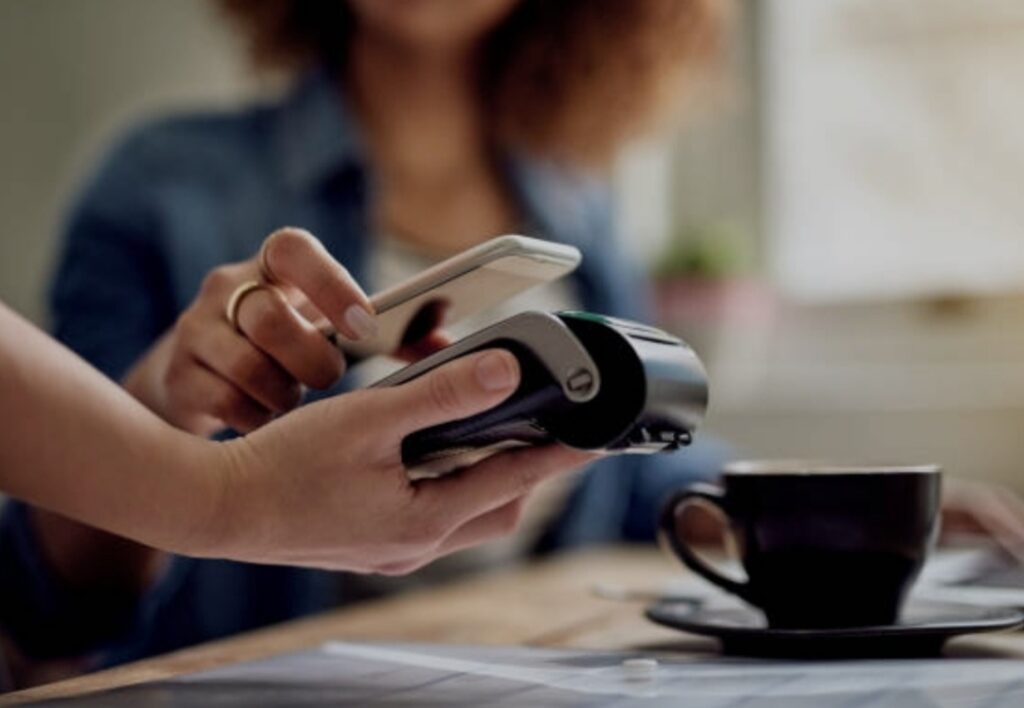
Innovative Applications – The Next Generation of NFC Technology
Beyond payments and IoT, NFC technology is being used in new and creative ways.
From digital business cards to smart advertisements, NFC innovations are revolutionizing industries.
Cutting-Edge Uses of NFC Technology
✔ NFC-Enabled Business Cards – Professionals can share contact details, websites, and social media with a simple tap.
✔ Smart Advertisements – NFC posters and billboards allow users to interact with brands by tapping their smartphones.
✔ Event Ticketing & Access Control – NFC wristbands and passes provide a seamless entry experience at concerts, sports events, and conferences.
✔ Healthcare & Medical Records – NFC cards and bracelets store patient data, making it easy for hospitals to access medical history securely.
Future NFC Innovations to Watch
📈 NFC in Retail & Marketing – Businesses will use NFC tags in product packaging for interactive shopping experiences.
🚗 Automotive Industry Expansion – NFC-powered car keys will allow remote access and personalized vehicle settings.
🏦 Banking & Identity Verification – Digital IDs and passports will use NFC for secure authentication.
📌 How Businesses Can Leverage NFC Innovations:
✔ Use NFC in marketing campaigns to engage customers with interactive ads.
✔ Adopt NFC-based authentication systems for faster and more secure logins.
✔ Explore NFC-powered digital business cards to make networking more efficient.
🚀 Get an NFC Business Card – Stand out from the crowd with tap-to-share networking!
The Future of NFC is Limitless
The evolution of NFC technology is shaping a world where devices interact seamlessly, payments are frictionless, and businesses create more engaging experiences.
✔ IoT and NFC integration will drive smarter homes, offices, and vehicles.
✔ Advanced payment solutions will make transactions even faster and more secure.
✔ Innovative NFC applications will revolutionize marketing, healthcare, and business networking.
🔹 Are you ready to embrace the future of NFC? Upgrade your devices, explore new applications, and take advantage of NFC’s full potential today!
Implementing NFC in Your Daily Life
Near Field Communication (NFC) technology is becoming an essential part of modern life, offering convenient, contactless interactions across various devices.
From seamless payments to automating tasks, NFC can make your daily routine more efficient and hassle-free.
If you’re wondering “What is NFC technology?”, it’s a short-range wireless communication method that allows devices to exchange data instantly when brought close together.
Here’s how to set up NFC on your device and make the most of its practical applications.
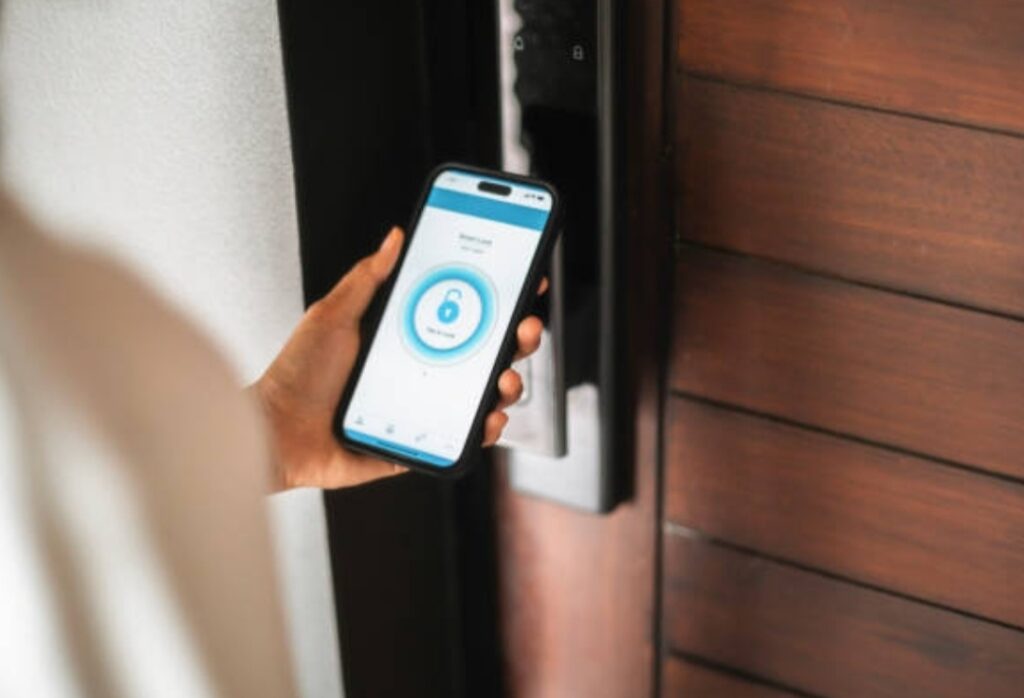
Setting Up NFC on Your Device – Step-by-Step Guide
Before you can start using NFC, you need to ensure your device is NFC-enabled and properly configured.
Here’s a simple guide to help you activate and customize your NFC settings.
Step 1: Check if Your Device Supports NFC
Not all smartphones and tablets are NFC-compatible. To check:
✔ On Android: Go to Settings > Connected Devices > NFC (or search “NFC” in settings).
✔ On iPhone: NFC is enabled by default on iPhone 7 and later (mainly for Apple Pay).
✔ For other devices: Check the manufacturer’s website or specifications.
🚀 Find the Best NFC-Compatible Smartphones Here – Get a phone that supports fast and secure NFC transactions!
Step 2: Enable NFC on Your Smartphone
Once you’ve confirmed that your device has NFC, follow these steps:
🔹 On Android:
✔ Open Settings.
✔ Navigate to Connected Devices (or “Connections” on some models).
✔ Find and enable NFC.
✔ Turn on Android Beam (if available) to share files via NFC.
🔹 On iPhone:
✔ NFC is always enabled in the background for Apple Pay and scanning NFC tags.
✔ Use the Control Center NFC tag reader to scan NFC tags manually.
Step 3: Customize NFC Settings for Personalized Use
Once activated, you can adjust NFC settings to enhance functionality:
✔ Set Default Payment App – Choose between Google Pay, Apple Pay, or Samsung Pay.
✔ Enable NFC Unlocking – Some devices allow you to unlock your phone using NFC-enabled accessories.
✔ Use NFC for Quick Sharing – Configure NFC to instantly transfer contacts, photos, or links between devices.
🚀 Upgrade to an NFC-Enabled Smartphone – Experience the full potential of NFC technology!
Practical Uses – How to Use NFC in Everyday Life
Once NFC is enabled, you can start using it for a variety of practical applications.
Here are some powerful ways to integrate NFC into your daily routine.

1. Contactless Payments – Fast & Secure Transactions
One of the most popular uses of NFC is mobile payments, making checkout processes faster and safer.
✔ Tap-to-Pay with Mobile Wallets – Services like Apple Pay, Google Pay, and Samsung Pay let you pay instantly by tapping your phone on a payment terminal.
✔ Secure Transactions – NFC payments use encryption and tokenization, reducing fraud risks.
✔ Accepted Worldwide – Major retailers, restaurants, and even vending machines support NFC payments.
📌 Pro Tip: Set up biometric authentication (Face ID or fingerprint) for extra security when making NFC payments.
🚀 Get an NFC-Enabled Payment Card – Enjoy fast, contactless transactions anywhere!
2. NFC for Data Sharing – Quick and Easy Transfers
NFC allows you to instantly share information between devices without an internet connection.
✔ Send Contacts Instantly – Tap two NFC-enabled phones to exchange contact details in seconds.
✔ Share Photos & Files – NFC can be used to quickly transfer pictures, documents, or links.
✔ Pair Devices with a Single Tap – Connect Bluetooth headphones, speakers, or smartwatches instantly.
📌 Did You Know? Some public Wi-Fi hotspots now use NFC tags for one-tap access, eliminating the need for passwords!
🚀 Discover the Best NFC File Transfer Apps – Share data effortlessly with NFC-enabled apps!
3. Automate Tasks with NFC Tags – Smart Home & Office Use
NFC tags can be programmed to perform specific actions when scanned.
✔ Turn on Wi-Fi or Bluetooth – Scan an NFC tag at your desk to enable Wi-Fi and connect to Bluetooth devices automatically.
✔ Launch Apps Instantly – Program an NFC tag to open Google Maps, Spotify, or your favorite productivity apps.
✔ Set Custom Routines – Use NFC to control smart home devices, such as turning on lights or adjusting the thermostat.
📌 Example: Place an NFC tag in your car that, when tapped, automatically opens Google Maps, starts your favorite playlist, and turns on Do Not Disturb mode.
🚀 Buy Programmable NFC Tags – Automate your life with custom NFC actions!
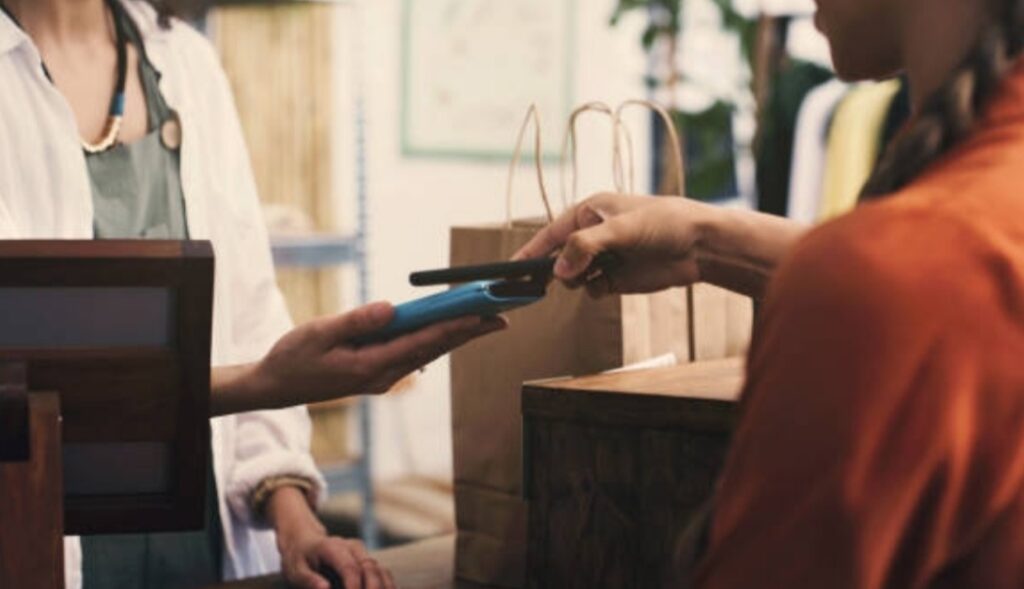
4. Use NFC for Digital Business Cards & Networking
Ditch traditional business cards and go digital with NFC-enabled business cards.
✔ Share Contact Details Instantly – Tap your NFC business card against a smartphone to transfer your information effortlessly.
✔ Save Paper & Impress Clients – Digital business cards are eco-friendly and more professional.
✔ Customizable Links – Store multiple links, social media profiles, or portfolio pages on an NFC card.
🚀 Get Your NFC Business Card Today – Stand out with a modern networking tool!
5. Enhance Security with NFC-Based Access Control
NFC is widely used for secure authentication and access control.
✔ Unlock Doors with NFC – Many hotels and office buildings use NFC cards for keyless entry.
✔ Log into Accounts Securely – Some NFC-based security keys can replace traditional passwords for safer logins.
✔ Verify Identity with NFC Passports & IDs – Many countries have integrated NFC into e-passports for quick identity verification.
🚀 Upgrade to an NFC Access Card – Enhance security with smart authentication!
How NFC Can Transform Your Daily Life
NFC technology is a game-changer, making everyday tasks simpler, faster, and more secure.
✔ Contactless payments offer a hassle-free shopping experience.
✔ Quick data sharing eliminates the need for cables and complex settings.
✔ NFC automation helps streamline smart home controls and work routines.
✔ Digital networking with NFC business cards enhances professional interactions.
✔ Advanced security features make NFC a powerful authentication tool.
🔥 Are you ready to experience the benefits of NFC? Set up NFC on your device today and explore its full potential!
🚀 Shop NFC Gadgets Now – Upgrade your lifestyle with cutting-edge NFC technology!
Frequently Asked Questions (FAQs) About NFC
As NFC technology continues to grow in popularity, many users have questions about its security, functionality, and differences from other wireless technologies.
Below are some of the most common questions about NFC, along with detailed explanations to help you understand its capabilities.
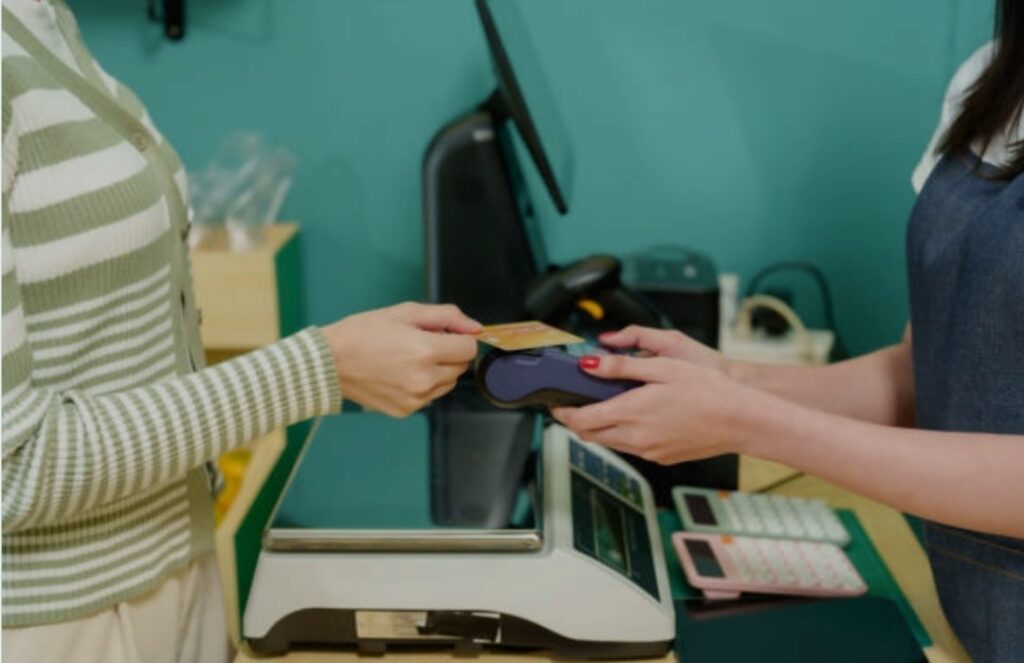
Is NFC Safe to Use for Payments?
One of the biggest concerns users have about NFC payments is security.
With cyber threats on the rise, it’s natural to wonder whether contactless transactions are truly safe.
1. Security Features of NFC Payments
NFC-based mobile payments, such as Apple Pay, Google Pay, and Samsung Pay, are highly secure due to multiple layers of protection:
✔ Encryption & Tokenization – When you make a payment, your actual card number is never shared with the merchant. Instead, a unique token is generated for each transaction, making it impossible for hackers to steal your real card details.
✔ Biometric Authentication – Mobile wallets require Face ID, fingerprint scanning, or a PIN before authorizing payments, preventing unauthorized transactions.
✔ Short-Range Communication – NFC has a very limited range (about 4 cm), meaning hackers can’t intercept your payment unless they are extremely close.
✔ Bank-Level Security – Financial institutions monitor transactions for fraudulent activities and provide additional protection for NFC payments.
2. Best Practices to Keep NFC Transactions Safe
To ensure maximum security, follow these best practices:
🔹 Use Strong Authentication – Enable Face ID, fingerprint, or PIN protection for all NFC payments.
🔹 Turn Off NFC When Not in Use – Disable NFC in settings when you’re not making payments to prevent unauthorized access.
🔹 Monitor Your Transactions – Regularly check your bank statements for any suspicious transactions.
🔹 Use Secure Devices – Keep your smartphone’s software updated to protect against vulnerabilities.
📌 Pro Tip: If your phone is lost or stolen, immediately remotely disable NFC payments using services like Find My iPhone or Google’s Find My Device.
🚀 Get an NFC-Enabled Payment Card – Upgrade to fast and secure contactless transactions!
Can NFC Work Without an Internet Connection?
Yes, NFC can function without the internet, but it depends on how you’re using it.
Here’s a breakdown of when NFC works offline and when it requires a connection.
1. NFC Functions That Work Offline
✔ Contactless Payments – Mobile wallets like Google Pay and Apple Pay can process transactions without an internet connection. The payment details are stored securely in the device and sent to the merchant’s terminal via NFC.
✔ File & Data Transfers – NFC can be used to transfer contacts, photos, and links between two devices without requiring Wi-Fi or mobile data.
✔ Pairing Bluetooth & Wi-Fi Devices – You can use NFC to pair Bluetooth headphones, smartwatches, and speakers without needing internet access.
✔ Automating Tasks with NFC Tags – NFC tags work offline for setting up actions like turning on Wi-Fi, launching apps, or adjusting settings.
2. NFC Features That Require Internet
✔ Online Payments & Banking Apps – While the tap-to-pay function works offline, transaction verification and updates require an internet connection.
✔ Cloud-Based NFC Services – Some NFC-powered apps rely on cloud storage to retrieve data, requiring internet access.
✔ Ticket Verification & Public Transport Payments – Many NFC-based transit systems work offline, but some require internet connectivity for ticket validation or balance checks.
📌 Did You Know? Some NFC smart cards, such as hotel key cards and metro passes, store data locally and do not require internet access for validation.
🚀 Explore the Best NFC Tags for Automation – Enhance your device’s offline functionality with NFC tags!
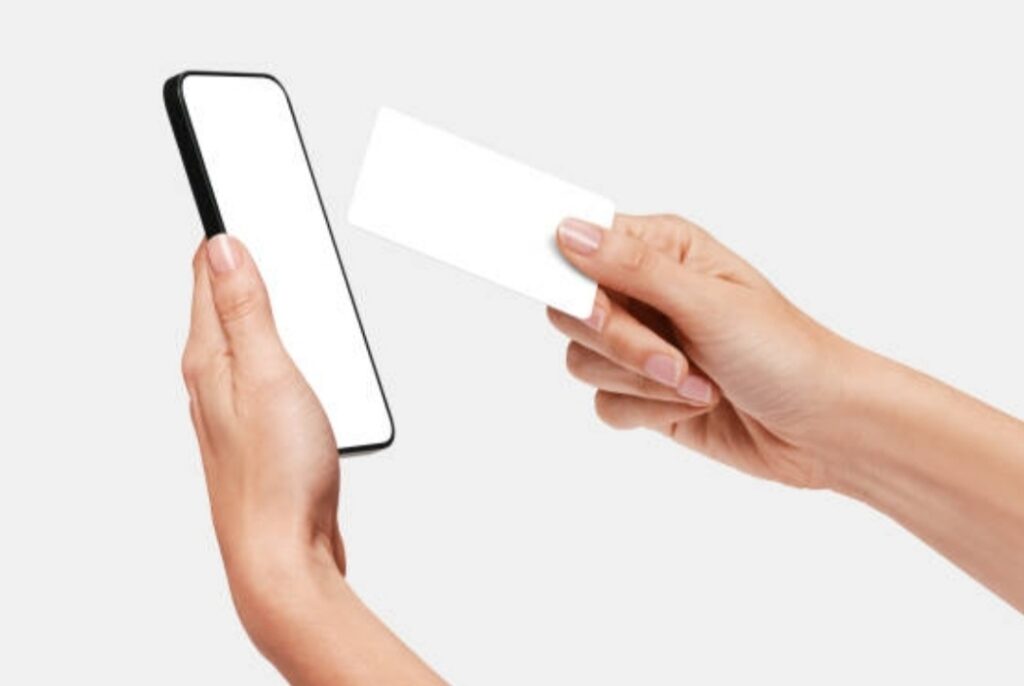
How Is NFC Different from Bluetooth?
While both NFC and Bluetooth enable wireless communication, they serve different purposes and operate in distinct ways.
1. NFC vs. Bluetooth – Key Differences
| Feature | NFC | Bluetooth |
| Range | ~4 cm | Up to 100 meters |
| Speed | Fast (Instant communication) | Faster for large file transfers |
| Power Consumption | Very low | Higher compared to NFC |
| Pairing Process | No manual pairing needed | Requires device pairing |
| Security | Highly secure (Short range + encryption) | Can be intercepted over longer distances |
| Primary Use Cases | Contactless payments, quick data sharing, smart automation | Wireless audio, file transfers, IoT device connectivity |
2. When to Use NFC vs. Bluetooth
✔ Use NFC when you need:
- Quick and secure payments (Google Pay, Apple Pay, Samsung Pay)
- Instant data transfer (contacts, links, small files)
- Fast device pairing (Bluetooth speakers, smartwatches)
- Task automation (smart home setups, office workflows)
✔ Use Bluetooth when you need:
- Wireless music streaming (headphones, speakers)
- File transfers over long distances
- IoT device connections (smart home systems, fitness trackers)
📌 Pro Tip: NFC and Bluetooth can work together! For example, some wireless earbuds use NFC for one-tap pairing but rely on Bluetooth for audio transmission.
🚀 Find the Best NFC & Bluetooth Gadgets – Upgrade to smart, wireless convenience!
Understanding NFC for Everyday Use
NFC technology is revolutionizing the way we make payments, share data, and automate tasks.
✔ NFC is safe for payments, thanks to encryption, tokenization, and biometric security.
✔ NFC works without an internet connection for payments, data sharing, and automation.
✔ NFC and Bluetooth serve different purposes, with NFC being faster and more secure for short-range interactions.
🔥 Are you ready to harness the power of NFC? Set up NFC on your device and explore its endless possibilities!
🚀 Shop NFC-Enabled Devices Now – Get started with the best NFC gadgets today!
Conclusion
NFC technology is no longer a futuristic concept—it is an integral part of our daily lives, making transactions, connectivity, and automation faster and more efficient.
From contactless payments to smart home automation, NFC has revolutionized how we interact with technology.
As more industries integrate near-field communication, its applications will only continue to expand, offering even greater convenience and security.
But what exactly has made NFC so impactful? Let’s take a final look at how this technology is transforming the world around us.

Recap of NFC’s Impact – How It Simplifies & Enhances Daily Interactions
1. NFC Has Transformed Contactless Payments
Gone are the days of fumbling with cash or swiping physical credit cards.
With NFC-enabled mobile wallets like Apple Pay, Google Pay, and Samsung Pay, transactions are:
✔ Faster – Simply tap your phone or smartwatch on a terminal, and the payment is processed instantly.
✔ More Secure – Advanced encryption, tokenization, and biometric authentication prevent fraud and data theft.
✔ Widely Accepted – From retail stores and restaurants to public transit, NFC payments are becoming a universal standard.
📌 Pro Tip: If your bank supports NFC-based digital wallets, make the switch today to enjoy seamless and secure transactions.
🚀 Upgrade to an NFC-Enabled Payment Card – Make your transactions safer and faster!
2. NFC Makes Data Sharing Instant & Effortless
One of the most convenient features of NFC technology is its ability to transfer information quickly between devices.
With a simple tap, you can:
🔹 Share contact details without typing or scanning QR codes.
🔹 Send photos and files between smartphones in seconds.
🔹 Pair Bluetooth devices instantly, without the need for manual setup.
🔹 Launch apps and websites automatically with NFC-enabled smart posters or business cards.
🚀 Explore the Best NFC Devices for Instant Data Sharing – Make your digital interactions smoother than ever!
3. NFC Is Revolutionizing Public Transport & Access Control
Commuters worldwide are benefiting from NFC-based transport systems, which eliminate the need for paper tickets or physical passes.
✔ Tap-and-Go Convenience – Many cities now support NFC transit cards, allowing passengers to pay for bus, train, or metro rides by simply tapping their phone or smartwatch.
✔ Secure Access Control – Offices, hotels, and event venues are adopting NFC keycards for secure, contactless entry.
✔ Enhanced Mobility for Smart Cities – As NFC expands, urban infrastructure is becoming more efficient and interconnected.
📌 Did You Know? Many universities and workplaces now use NFC-based ID cards for seamless access to buildings, libraries, and even cafeteria payments.
🚀 Upgrade to an NFC Smart Card – Experience a new level of convenience!
4. NFC Enhances Smart Homes & Automation
Imagine a world where you can control your home’s lighting, appliances, and security system with a single tap.
With NFC tags, you can:
✔ Turn on Wi-Fi or Bluetooth automatically when you enter your home.
✔ Trigger smart home routines, such as adjusting the thermostat or playing music.
✔ Set up automation for work tasks, like opening specific apps or sending messages.
✔ Lock and unlock doors securely with NFC-enabled smart locks.
📌 Pro Tip: Use custom NFC tags to personalize your home automation and make daily tasks more efficient.
🚀 Shop NFC Smart Home Gadgets – Upgrade to next-level home automation today!
5. NFC Is Driving Innovation Across Multiple Industries
Beyond personal convenience, NFC technology is shaping the future of businesses and industries worldwide.
✔ Retail & E-Commerce – NFC-powered product tags provide customers with instant access to product details, reviews, and purchase options.
✔ Healthcare – Hospitals use NFC wristbands and smart cards for patient identification, medication tracking, and appointment management.
✔ Marketing & Advertising – Businesses leverage NFC-enabled posters and flyers to engage customers with interactive content.
✔ Gaming & Entertainment – NFC is enhancing augmented reality (AR) experiences, toys, and digital collectibles.
🚀 Discover NFC-Enabled Business Solutions – Stay ahead in the digital era!
Final Thoughts – The Future of NFC Technology
Now that you understand what NFC technology is and how it enhances daily life, it’s clear that its potential is limitless.
✔ NFC has simplified payments, data sharing, automation, and access control, making daily interactions smoother and more efficient.
✔ Industries are rapidly adopting NFC for security, convenience, and innovation.
✔ With the rise of smart devices and IoT, NFC will continue to play a crucial role in shaping the future.
🔥 Are you ready to embrace the power of NFC? Upgrade your devices and start experiencing the ultimate convenience today.
🚀 Shop the Best NFC Devices Now – Transform your tech experience with the latest NFC gadgets!
You might also like :

